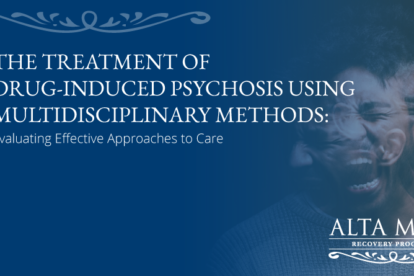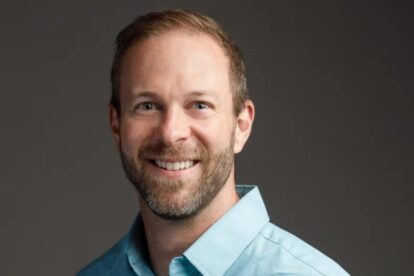An Interview with Dr. Louise Stanger: The Triple Threat of Addiction, Mental Illness, and Tertiary Issues.

People think that anybody can do an intervention. On TV it only takes 53 minutes: addiction, conflict, intervention, treatment. If only it was that simple. We spoke with Dr. Louise Stanger, Director of All About Interventions recently, and she had some wonderful insight to share.
The Reality of Interventions
“The clients that we are presented with these days are very complex. They have mental health and substance abuse disorders. They could also have something else going on. It could be physical difficulties, it could be legal difficulties; their families are very complex, and they have multiple problems.”
When Dr. Stanger begins a new case, she creates a “family map” or “genogram” to help her determine which problem to tackle first. She maps out her client’s family history of substance abuse, mental health disorders, or any dramatic recent changes such as a death, trauma, or finances, sexual addictions, shopping, spending habits, and even digital media usage.
“I’m trying to achieve a robust picture of who the identified client is, what they are doing, and where they came from. Many times, the identified loved one feels like they are the only one with a problem. In reality, there is a long line of family members that have experienced complex problems. Helping to identify that also helps you when you are performing an intervention.”
To create this robust picture, Dr. Stanger will pursue multiple sources of information so she can triangulate her data. This means talking to as many people related to the client as she can. Her goal is to determine “if substance abuse is primary, mental health is prominent, and which came first.” She admits that it can be difficult:
“Sometimes, you can’t tell these days, especially when someone is in a substance-induced psychosis. There was one case I remember where there was a predisposition of schizophrenia in the family history. He was doing a lot of different drugs, but one of the things he was doing was melting down marijuana into something called “budder.” There has been some evidence that people with a predisposition of schizophrenia who have been melting down budder and using it, end up in a permanent substance-induced psychosis or early stages of schizophrenia. So was his psychosis the schizophrenia or the budder? You need to see the complete picture.”
Begin Your Recovery Journey Today
866-922-1350Portrait of Addiction
Another tool Dr. Stanger uses to collect rich, meaningful data about her clients is a qualitative research method called portraiture, which is a combination of in-depth interviews and observation. Portraiture creates a dialogue between Dr. Stanger and her client.
“It says that you and I are collaborators in this story. When I am doing an intervention, I want to talk to every individual because everyone holds a different portrait of that loved one and they see different things.”
When Dr. Stanger embarks on an intervention, her job is not to provide a client with a definitive clinical diagnosis. However, the information she gathers will help her differentiate between disorders so she can navigate an intervention course.
The Free Radicals of Intervention
Managing intervention participants, such as family members or friends, can be as complicated as distinguishing between disorders. In one particular case, Dr. Stanger had to invite a young girl experiencing mental health (borderline personality, disordered eating, and hoarding ) to enter into treatment.
“We took a look at the family, and in the family of origin was informative, challenging, and sad. Her grandmother was a Holocaust survivor. She was present for the intervention; she was a lovely woman. Her father was once a famous psychologist, but he had had a stroke, and he had a mental health disorder. He kept swearing, though he knew the truth. When she was two, her younger brother was born with a developmental disability and he has an IQ of 40. She also had an eating disorder. You can imagine being in someone’s living room with all these people present and your job is to move this person into treatment.”
Managing the above group dynamics can be extremely difficult, so Dr. Stanger always works with a teammate: “My teammate, Jeff Merrick, is a lawyer, but when he works with me in an intervention, he is an interventionist.”
“The reason you work with two people is that you would have to be just beyond arrogant to think you really could move someone like the young girl with these multiple issues to change by yourself. Are you kidding me? What are you going to do, come in with pliers and grab them? We were able to maneuver the family around and her into a safe place. It was in many respects a miracle she agreed to go with us. I could say it was just great clinical skills, though I know there was an art and a science to it. She was in pain, and she knew she needed to go somewhere.”
Dr. Stanger emphasizes the importance of proceeding with caution when attempting an intervention. Caution mixed with compassion. She has to determine how resilient her client is so that she doesn’t create a situation where trauma is experienced.
“Recently, we had a young woman whose mother died of alcoholism, her sister hung herself, and she had blown a 4.5 and police had to take her door down. My job as an interventionist is not to open up that entire trauma, my job is to know that there was that trauma and know the right place to refer her to get her the help she needs. You have to be empathetic.”
We're Here to Help. Call Today!
866-922-1350Order out of Chaos
Dr. Stanger’s role as an interventionist goes beyond dropping her client off at a treatment center. She collaborates with the treatment center to help bring about a systemic change in her client; however, not all treatment centers are the same. Dr. Stanger has to find the right match for her client’s needs, financial resources, and length of stay.
“Recovery begins with treatment and there are a lot of different ways you can do it.”
Recently, Dr. Stanger worked with a homosexual paraplegic client, that had a traumatic brain injury as well as disordered eating issues, and had two sets of families (one legal and one familial) from different ethnic backgrounds. “Even finding treatment centers for someone who has multiple issues is a trick, so you have to be mindful. […] That is one of the reasons it is so much fun to work with Alta Mira, because they can take the complicated cases. They can really work with them, and they have the skill to be able to open them up over time.”
Let Us Help
Addiction is not one-sided, it is not cut-and-dried. The many facets of addiction and co-occurring disorders can be difficult to navigate. If you have a loved one suffering from addiction, and aren’t sure how to get them to seek the help they need, the best course of action is to find a qualified interventionist who can move them to treatment—someone like Dr. Stanger, who understands the complexity of multiple disorders and how to orchestrate an effective intervention.
“You need to really be thoughtful, and I think that my main concern is that today there are so many people who say they know how to do these things. I love the fact that I am a social worker and a social worker professor, because I see a systems approach. I think that an ecological systems approach is really appropriate. I also think because we use portraiture we get a better picture.”
A professional can help you get that picture, and help your loved one understand the need for treatment. And once in treatment, we can get them started on the road to recovery.
Our team at Alta Mira collaborates with compassionate, experienced and credentialed experts like Dr. Louise Stanger to get your loved ones the help they need. Our team of compassionate, reputable addiction treatment experts in various disciplines are dedicated to helping people break free from substance abuse. Please contact us today.






